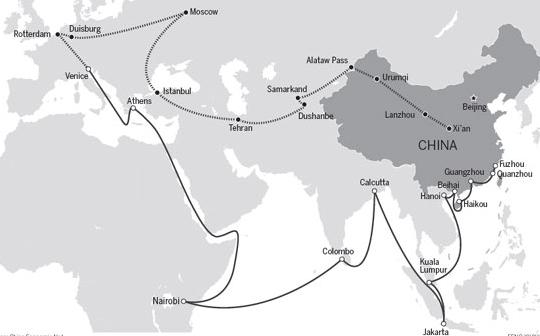Southern Silk Road
Zhang Qian, an important explorer in the Han Dynasty, opened up the historically important Silk Road during the reign of Han Emperor Wudi (141BC–87BC). When he set out on his first journey to the Western Regions, he found bamboo staffs of Qiongshan (Yingjing County of Sichuan Province) and delaines of Sichuan Province in Daxia (Balkh) in 128 BC. Merchants told him that these goods were bought from Juandu (now India); therefore, Zhang Qian guessed that there was a trade road between Sichuan Province and India.

The Southern Silk Road was mainly composed of West Route (Maoniu Route) and East Route (Wuchi Route). The West Route originated from Chengdu, wandered through Sichuan Province via Ya'an City, Maoniu (Hanyuan), Qiongdu (Xichang), and took traders to Myanmar (Burma) by way of Dali, Baoshan and Tengchong. Then its ancient trade route extended through to Juandu (India), Bangladesh and even Middle East. The East Route was very narrow and had only five-feet wide, so it was also called 'Wuchi Route'. It began from Chengdu, passed through Yibin, Zhaotong, Qujing and reached Kunming, where one branched road went to Vietnam and the other one wound to Dali, joining the West Route. Traders found steep and high mountains in the southwest region of China extremely challenging to negotiate. In order to overcome difficulties, clever ancient people built characteristic bridges and plank roads along cliffs by perforating holes on mountains. Even now people can found the holes left on the sheer cliffs.
评论列表 ( 0 )